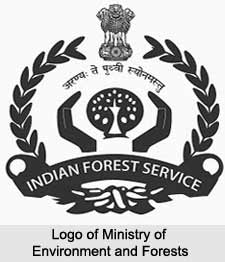 The Ministry of Environment and Forests (MoEF) is the nodal agency in the administrative structure of the Central Government for planning, promotion, co-ordination and overseeing the implementation of India`s environmental and forestry policies and programmes. The primary concerns of the Ministry are implementation of policies and programmes relating to conservation of the country`s natural resources including its lakes and rivers, its biodiversity, forests and wildlife, ensuring the welfare of animals, and the prevention and abatement of pollution. While implementing these policies and programmes, the Ministry is guided by the principle of sustainable development and enhancement of human well-being.
The Ministry of Environment and Forests (MoEF) is the nodal agency in the administrative structure of the Central Government for planning, promotion, co-ordination and overseeing the implementation of India`s environmental and forestry policies and programmes. The primary concerns of the Ministry are implementation of policies and programmes relating to conservation of the country`s natural resources including its lakes and rivers, its biodiversity, forests and wildlife, ensuring the welfare of animals, and the prevention and abatement of pollution. While implementing these policies and programmes, the Ministry is guided by the principle of sustainable development and enhancement of human well-being.
The Ministry also serves as the nodal agency in the country for the United Nations Environment Programme (UNEP), South Asia Co-operative Environment Programme (SACEP), International Centre for Integrated Mountain Development (ICIMOD) and for the follow-up of the United Nations Conference on Environment and Development (UNCED). The Ministry is also entrusted with issues relating to multilateral bodies such as the Commission on Sustainable Development (CSD), Global Environment Facility (GEF) and of regional bodies like Economic and Social Council for Asia and Pacific (ESCAP) and South Asian Association for Regional Co-operation (SAARC) on matters pertaining to the environment.
Objectives of Ministry of Environment & Forests
The broad objectives of the Ministry are:
* Conservation and survey of flora, fauna, forests and wildlife
* Prevention and control of pollution
* Afforestation and regeneration of degraded areas
* Protection of the environment and
* Ensuring the welfare of animals
These objectives are well supported by a set of legislative and regulatory measures, aimed at the preservation, conservation and protection of the environment. Besides the legislative measures, the National Conservation Strategy and Policy Statement on Environment and Development, 1992; National Forest Policy, 1988; Policy Statement on Abatement of Pollution, 1992; and the National Environment Policy, 2006 also guide the Ministry`s work.
This article is a stub. You can enrich by adding more information to it. Send your Write Up to content@indianetzone.com




















